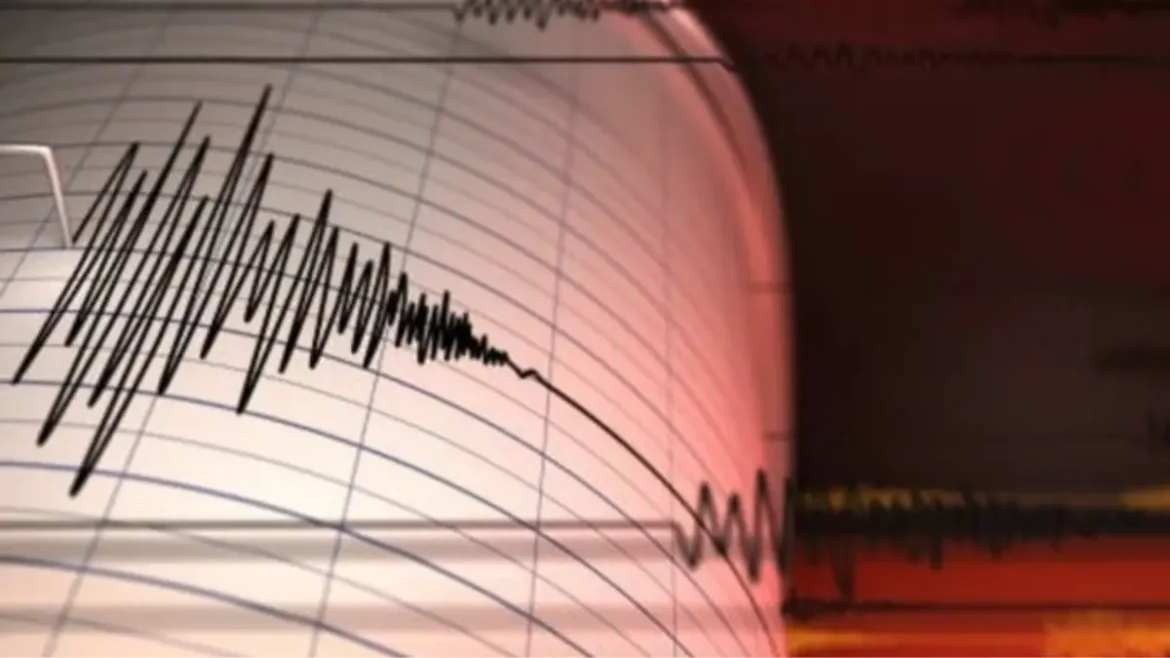Delhi, along with other parts of North India, is located in a seismically active zone, experiencing frequent earthquakes due to the movement of tectonic plates beneath the Earth’s surface. This region lies near the boundary between two massive tectonic plates—the Indian Plate and the Eurasian Plate. The collision between these plates has been ongoing for millions of years, forming the Himalayan mountain range and creating significant geological pressure, which leads to the release of energy in the form of seismic waves, causing earthquakes.
Recent Earthquake in Delhi: February 17, 2025
On the morning of February 17, 2025, a magnitude 4.0 earthquake hit Delhi at around 5:36 AM. The epicenter was located near Dhaula Kuan, in the National Capital Region (NCR). Residents in Delhi, Noida, Greater Noida, and Ghaziabad felt the tremors and rushed out of their homes in panic, although they did not report any immediate injuries or significant damage.The earthquake had a shallow depth of 5 kilometers, which often amplifies the intensity of tremors, making them more noticeable to people.
The Science of Seismic Waves
An earthquake is essentially the release of energy from the Earth’s crust due to the shifting of tectonic plates. This release of energy produces seismic waves, which travel through the Earth and cause the ground to shake. There are two main types of seismic waves:
- P-waves (Primary Waves): These are the fastest seismic waves and the first to be detected by seismographs. P-waves travel through both solid and liquid layers of the Earth. They cause the ground to compress and expand in the direction of propagation, similar to how sound waves travel through air.
- S-waves (Secondary Waves): S-waves are slower than P-waves but cause more ground displacement. They can only travel through solid material and are responsible for much of the shaking felt during an earthquake. S-waves move the ground up and down or side to side, which leads to more destructive shaking.
Seismic waves are recorded using seismographs, instruments that measure the amplitude and frequency of these waves. By analyzing the data from these seismographs, scientists can determine the earthquake’s magnitude, location, and depth.
How Does Earthquake Magnitude Work?
The Richter scale measures the magnitude of an earthquake, which reflects the energy released during the event. This scale is logarithmic, meaning that each whole number increase on the scale increases the energy released by a factor of 32. For example, a magnitude 5.0 earthquake releases 32 times more energy than a magnitude 4.0 earthquake.
In addition to magnitude, intensity measures the effects of an earthquake on people, buildings, and the Earth’s surface. The Modified Mercalli Intensity (MMI) scale is used to assess earthquake intensity based on the observed effects.
Why Is Delhi Vulnerable to Earthquakes?
Delhi lies in Seismic Zone IV, a region with a high seismic risk. This classification indicates that the area is prone to earthquakes of moderate to strong magnitude. The primary cause of this seismic activity is the tectonic collision between the Indian Plate and the Eurasian Plate. This collision causes immense pressure, which is released through fault lines, generating earthquakes.
Two major fault lines in the region—the Delhi-Haridwar Ridge and the Delhi-Moradabad Fault—are responsible for some of the significant seismic events in Delhi. These fault lines are capable of producing earthquakes with magnitudes of up to 6.7. The active nature of these faults, along with the region’s proximity to the Himalayas, makes Delhi and surrounding areas vulnerable to seismic activity.
Notable Earthquakes in Delhi’s History
Delhi has experienced several significant earthquakes, underlining its vulnerability to seismic activity. For example, in March 2023, a magnitude 6.6 earthquake originating from the Hindukush region in Afghanistan sent tremors through North India, including Delhi. Similarly, in 2015, a magnitude 3.3 earthquake occurred near Dhaula Kuan.
Interesting Read
Safety Measures and Earthquake Preparedness
While earthquakes cannot be predicted, preparation is key to minimizing their impact. The Delhi Disaster Management Authority (DDMA) works on public education and building preparedness among residents. Some essential earthquake safety tips include:
- Drop, Cover, and Hold On: This is the primary safety measure during tremors. Drop to your knees, take cover under a sturdy object (like a table), and hold on until the shaking stops.
- Building Safety: Ensure that buildings, especially older ones, are earthquake-resistant. Retrofits and reinforcements can make buildings more resilient to seismic activity.
- Emergency Kits: Prepare an emergency kit with essentials like food, water, medical supplies, and important documents.
- Stay Informed: Use earthquake warning systems and stay updated with reliable information from local authorities.
Conclusion
Delhi and North India experience frequent earthquakes due to the region’s location near major fault lines and the ongoing tectonic collision between the Indian and Eurasian Plates. Seismic waves, the energy released during earthquakes, travel through the Earth and cause the ground to shake. Understanding the science behind these natural events can help people stay informed and prepared for future seismic occurrences. By continuing efforts to build awareness and enhance infrastructure, the region can better cope with the risks associated with earthquakes, ensuring the safety and well-being of its residents.


